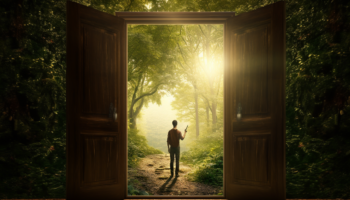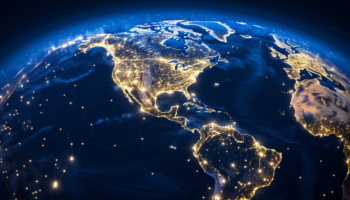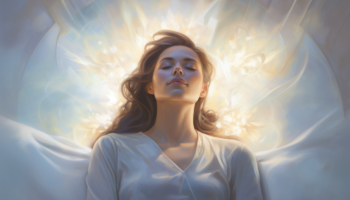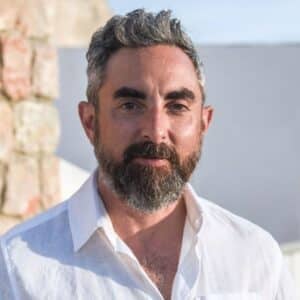What if I told you that we have become entangled in a war that has been defined by misinformation? Imagine a hobbyist pushing aside Elon Musk from the podium to discuss aerospace engineering – this analogy describes our nonsensical “War On Drugs.”
The anti-drug narrative regarding the relation between mental health and psychedelics is only strengthening as the 21st century proceeds—entangling us in its phony web.
In particular, schizophrenia has become the mantra of those countless anti-drug warriors looking for magic bullets in their ironically delusional campaigns. But despite the absence of their expertise, their ignorant perspectives somehow continue to dominate genuinely concerned communities. Hopefully, Rachel Leigh Cook’s radical 180-turn on her egg-based “your brain on drugs” PSA is the beginning of a new era. An era wherein the fundamental right of humans to maintain control over what they can and will not introduce into their bodies feeds the headlines, instead of the voices of those who in any other field would be flippantly dismissed as inconsequential pests.
As the irrationality of these instigators persists, the only “weapon” in the struggle against their psychedelic-related bunkum is the dissemination of counter-information. Thankfully, the internet, which has also become the central platform of the “LSD turns you schizo” propaganda machine, allows for this dissemination to readily occur.
Even the masters of the mental-health field are still outside with the jury regarding the link between schizophrenia and LSD. It is akin to the fat/sugar dietary discourse that lumbers along, and it is the reason why the world’s youngest-ever billionaire established the John Arnold Foundation—debunking scientific myth is costing us millions and the schizophrenia/LSD conundrum is no exception.
Amidst this complexity, which warrants a society-wide circumspection of a high order, the zombie-like birth of LSD-fueled schizophrenics forms the basis of the anti-psychedelic warning “every parent needs to know.” Akin to other dubious ideas such as the “gateway drug” concept, schizophrenia is being touted as the mental-mush maker that all psychedelic users need to fear, from pot smokers to acid takers. Sure, those who have been personally affected through tragic incidents have been invited to share their stories, as should always be the case, but shock jocks and thirsty clickbait/ratings hunters have latched onto them like they are the vulnerable prey of shroom-filled woodlands.
YOUR PARENTS’ GENERATION MIGHT USE “TRIPPY”
FOR A REASON
In my past work with young people who use drugs, the mainstream histories of the drugs they were using usually came as a complete surprise. While the colorful careers of cultural icons underpinned their understandings of the role of psychedelic drugs in the 20th century and their familiarity with them, the intensive interest of especially the US Government in the potential of LSD is not something that any ordinary citizen is typically prepared for, let alone mid-adolescent trippers.
Following Albert Hofmann’s synthesis of LSD in Basel, Switzerland, in 1938, the 1950s was an especially active era regarding the employment of LSD by psychiatry on an international scale, with the formation of two theoretical schools, while treatment exercises were conducted in locations that range from Iraq to Poland to America. The English psychiatrist Ronald Sandison visited Sandoz, the Basel-based LSD-production laboratory, in 1952, and Hofmann’s findings led him to return to Britain with 100 vials of the then-called Delysid.
The advancements that had eluded Sandison in his previous use of only traditional psychotherapy impressed his superiors so much over the subsequent three years that they approved the construction of an actual “LSD Clinic.” Sandison’s patients would lie down after a Delysid dosage in private rooms that contained a record player and a blackboard, while medical staff would monitor them at regular intervals. After morning arrival times, the patients would eventually meet at 4 p.m., share their experiences, and then return home with the aid of a driver.
Canadian-based British psychiatrist, Humphry Osmond, famous for introducing the term “psychedelic,” reported unprecedented alcohol-abstinence rates of 40 to 45 per cent at around the same time as Sandison’s success. Terminal cancer even became a target of LSD therapy, with severe-pain management and the display by the patients of an overall improved attitude toward their situation, including the inevitability of a premature death, showing the remarkable life-improvement potential of the drug, rather than the schizophrenia-in-a-dose ridiculousness that LSD’s reputation has been malformed into.
The interest in the substance was so intensive that by 1965, a global estimate of between 30,000 and 40,000 psychiatric patients was presented in terms of the therapeutic receipt of LSD; however, this discounted the “thousands” of voluntary subjects, as well as the non-human animal-based research. By 1965, out of the 2,000 papers that had been published on LSD worldwide, approximately half are human studies.
“The time has arrived to stop concocting “demons” and to restart the process of building an even-more-solid evidence-based platform.”
The extent of the research regarding the Sandoz-based discovery was unprecedented, but notably, a worldwide schizophrenia scare had not gripped the psychiatric field, let alone any other professional organization.
Of particular note, Senator Robert Kennedy stated to a congressional hearing: “Perhaps to some extent we have lost sight of the fact that it [LSD] can be very, very helpful in our society if used properly.”
At a 1965 LSD conference, Dr. Sidney Cohen, an American physician who used LSD in his work with numerous cancer patients, explained that LSD and LSD-type substances reduced the patient’s defensiveness, allowed for “repressed memories and conflictual material to come forth” and the formation of a closer bond between the patient and the therapist, and the “alertness [of the patient] is not impaired,” while the “insights are retained after the drug has worn off.” Here, LSD facilitated an enhanced form of cancer treatment, rather than any kind of mental illness.
Perhaps the most-extraordinary research that was performed, and that the corresponding hospital administration was later extremely perturbed about revealing due to a markedly different ideological climate, belongs to Dr. Gary Fisher. He worked with children diagnosed with schizophrenia between the ages of four and 12 years in an experiment for which the following working hypothesis was applied:
“… psychosis is a massive defensive system of repression-avoidance-denial in the service of protecting the individual from experiencing early childhood trauma. The repression is so massive that the individual ceases to experience himself with any validity.”
Although the completion of Fisher’s work was never permitted, he documented that four of the seven children reported transcendental experiences, and the beneficial impact of the LSD treatment led to successes such as school re-attendance and the subsiding of the enactment of physical attacks by the children. Significantly, the work was conducted in a ward described by Fisher as “constant pandemonium,” and he had previously worked for more than four years with the same children without the aid of LSD and had achieved only a comparatively minimal extent of progress.
FROM SELF-ACTUALIZATION TO DEMONIZATION
While Hofmann’s LSD-discovery notes were made in 1938, the American establishment’s experimentation with LSD is far from any kind of dalliance, having lasted from 1949 to the mid-1960s. In fact, the LSD that was used for Fisher’s study was donated by Sandoz Pharmaceuticals.
It was at one of two 1966 US Senate subcommittees on matters pertaining to LSD that Robert Kennedy’s wife spoke, and they were the forums for the doctors who set in motion the subsequent demonizing of LSD, where they indicated a psychosis-causing effect and “the loss of all cultural values.” As part of the wider “War on Drugs” arsenal, and also because it formed a narrative that was easier to share than an image of Hofmann waking the morning after his inaugural LSD trip, when he described himself sitting in a “newly created” world where all of his “senses vibrated in a condition of highest sensitivity,” it became a subsequent (mis)understanding among humans that “LSD will turn you into a ‘schizo.’”
It is particularly interesting that Edward M. Brecher and the Editors of Consumer Reports Magazine (1972)stated that the researchers and clinicians of the mid-20th-century experiments all tried the psychedelics themselves as well, as they believed it would lead to an enhanced understanding of the patients, and a number of them stated that it enabled the achievement of a “greater empathy with their psychotic patients.” Further, Fisher concluded: “It is only through personal experience with these compounds does one appreciate the potential they offer.”
Of greater importance, however, is the realization of the critical nature of an experienced and knowledgeable guidance that is contrary to the media’s all-too-frequent images of unrestrained, misinformed use in therapeutically questionable environments. Accordingly, Fisher explained: “… the most important ingredient in LSD was the person taking it. The second most important ingredient is the guide who sits with that person.”
Consider the word “demonization.” Ironically, the schizophrenic accusations that smear LSD are based on the notion that the “victims” will become forever tormented by delusions and terrifying hallucinations (Anil Seth, co-director of the Sackler Centre for Consciousness Science at the University of Sussex, believes that we all hallucinate all of the time, it is just that they are “usually controlled by the sensory data that we get.”), while those who continue to catastrophize the use of psychedelics with doom-laden claims of LSD-based schizophrenia diagnoses fuel a delusional overall perception of currently illicit drugs.
There is very little solid evidence to suggest a link between psychedelics and schizophrenia. A recent studysuggests that psychedelic users are in no worse mental condition than non-users, and a retrospective study of hundreds of psychotic patients given LSD in the 60s does not produce any reliable evidence of an increase in schizophrenic symptoms. The majority of the schizophrenia narrative is not based on any research or data.
In Third Wave, the time has arrived to stop concocting “demons” and to restart the process of building an even-more-solid evidence-based platform during an era where rigorous and robust scientific processes are needed more than ever before.







That guy who injuried more people with his car in New York… they said that the guy was on drugs. It may be true but also it may be very well just a lie, just for demonizing the psychedelics. The officials may use these regrettably incidents for this purpose. Not saying that it might be an inside job. – excuse my English.
I wasn’t aware of the study where Dr. Gary Fisher worked with children diagnosed with schizophrenia, with remarkably noteworthy results. Will need to read the study in full.
Thanks for a great article.
I suffer from roughly 4 nental health issues. LSD and DMT are a kind of release valve for me,when i get near breaking point i take these 2 substances which centre me and mentally o feel like my troubles are erased. Obviously they are still there but i can recognise them and take care of them quicker and easier. The other alternative is to take my medication of 13 pills per day. My organs have got to be struggling to handle 13 pills a day for 15 years now.